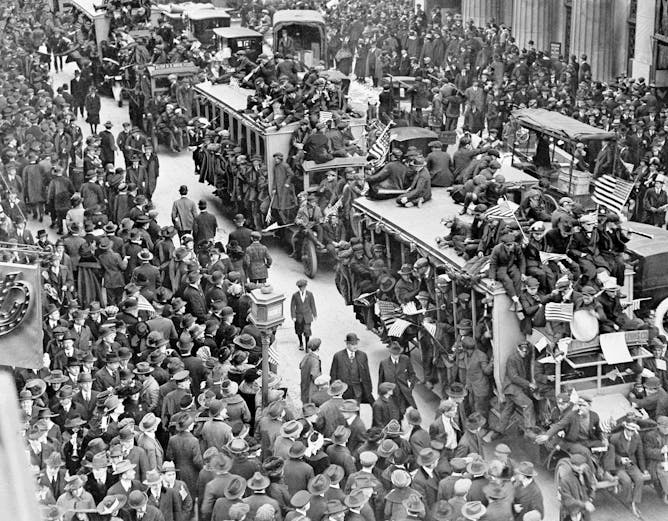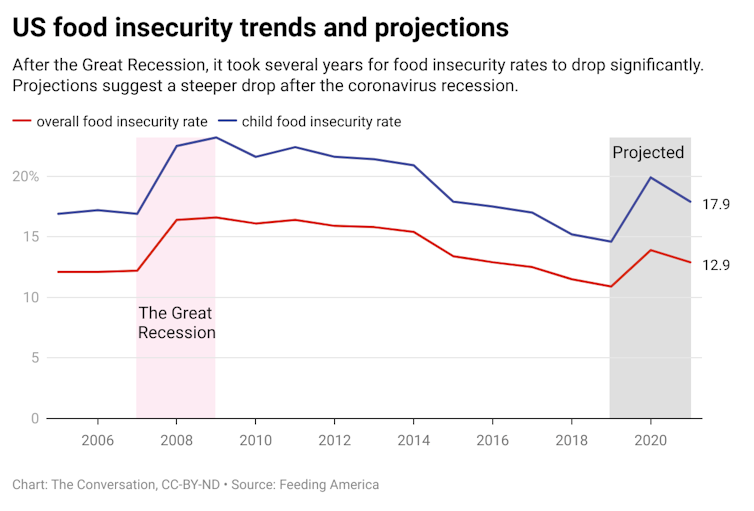|
Grumblings about closed businesses, arguments over whether kids are safe in school and a populace growing weary of wearing masks and keeping distance. Sound pretty familiar? But as University of Michigan historian J. Alexander Navarro writes, this was how Americans felt about anti-pandemic measures a century ago – when influenza, not coronavirus, was ravaging the world.
When a first wave of disease subsided by summer 1918, people clamored to return to normal life and officials rolled back public health orders. It was a mistake; the virus wasn’t through with them yet. As Navarro explains, history provides a clear warning about what happens when social-distancing measures are lifted too soon.
Also today:
One other note: We are beginning to experiment with sponsorship messages in our newsletters. Much as public television and art museums do, we are gaining valuable benefits to support our nonprofit mission through this program. Please reply to this email if you have any feedback.
|

Armistice Day celebrations on Nov. 11, 1918, worried public health experts as people crowded together in cities across the U.S.
AP Photo
J. Alexander Navarro, University of Michigan
Americans were tired of social distancing and mask-wearing. At the first hint the virus was receding, people pushed to get life back to normal. Unfortunately another surge of the disease followed.
|
Ethics + Religion
|
-
Jennifer Wollock, Texas A&M University
Chivalry is not an elite men's club. Women have always been involved.
-
Firmin DeBrabander, Maryland Institute College of Art
A privacy expert says citizens will need to exercise their right to public protest if they want to preserve their privacy.
|
|
Health
|
-
Maureen Ferran, Rochester Institute of Technology
AstraZeneca just announced results from its US-based trial. It found the vaccine to be 79% effective and safe for use, despite recent concerns around reports of blood clots.
|
|
Science + Technology
|
-
Laurin Weissinger, Tufts University
How do you prove that people have been vaccinated without putting their privacy at risk? The technology and best practices to make it happen exist. It's far from clear, however, if they're being used.
|
|
Politics + Society
|
-
Catesby Holmes, The Conversation
The House passed a bill creating a path to citizenship for undocumented immigrants who came to the US as children. Here's what you need to know about the Dreamers and DACA.
|
|
Education
|
-
Gabriel Rodriguez, Iowa State University
US suburbs are rapidly diversifying, but students of color often face academic and social hurdles in suburban schools.
-
Niral Shah, University of Washington
Overt racism is easy to spot. But more subtle forms based on false narratives can be equally dehumanizing – and it's no joke.
|
|
From our international editions
|
-
Vittorio Bufacchi, University College Cork
COVID-19 requires us to make ethical decisions like Ancient Greeks and Romans.
-
Nicodemus Minde, United States International University
She has been described as compassionate, rational and calm – attributes that are a far departure from her former boss.
-
Peter Malcontent, Utrecht University
There is now a broad consensus in Israel on meeting the Palestinians with strength, which makes them no longer an election priority.
Today’s graphic

|
|